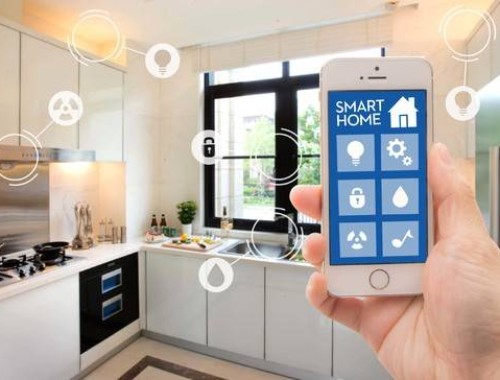
Touchless faucets segment of smart bathroom market holds the largest market share of more than 24% in the global market, says this 2016 report that analyzes advanced technologies aimed at energy conservation and maintaining hygiene; in the US smart bathrooms are gaining popularity to counter rising energy costs. In Germany, the government has introduced the concept of the smart bathroom in the construction market to control and reduce high energy costs. However, Japan is confronted by a serious challenge the gap in the supply of and demand for energy. To narrow this gap, the Japanese government has started focusing on the development of smart bathrooms in public infrastructure and buildings.
The analysts forecast global smart bathroom market to grow at a CAGR of 10.43% during the period 2016-2020. According to the smart bathroom market report, construction companies worldwide are focusing on the development of smart buildings with features like smart bathrooms to promote sustainable development and efficient energy management. Smart bathrooms offer optimally integrated solutions such as smart toilets, automatic flush systems, and automatic faucets. As a result, the demand for smart bathrooms, especially in urban areas, is increasing significantly.
The analysts highlight the three factors that are contributing to the growth of the global smart bathroom market. Smart cities employ multiple technologies to form an interconnected system of buildings and the power grid. Energy consumption is regulated at each stage of a building's life cycle with the ICT-based monitoring, feedback, and optimization tools. According to the UN estimates, 53% of the world's population resides in urban areas as of 2015. The proportion is likely to increase to 58% by 2019. Urbanization directly affects the construction market. Growth in urban population leads to issues like air pollution, space congestion, resource depletion, and power crisis. There has been a substantial rise in the number of air and rail passengers globally during 2011-2015, and it is expected to increase further during the forecast period. Airlines have increased the number of flights to meet the growing demand. The UAE-based Emirates, the largest airline in the Middle East region, flew more than 90 million people, including international passengers in 2015.
Global Smart Bathroom Market 2016-2020, has been prepared based on an in-depth market analysis with inputs from industry experts. This report covers the market landscape and its growth prospects over the coming years. The report also includes a discussion of the key vendors operating in this market. This report covers the present scenario and the growth prospects of the global smart bathroom market over 2016-2020. To calculate the market size, the report considers the revenue generated globally from the sale of smart bathroom components like touch-less faucets, flushes, soap dispensers, trash cans, and smart toilets.
Further, the smart bathroom market report states that the cost of setting up smart bathrooms or replacing existing bathroom fixtures with smart bathroom fittings is substantial, especially for homeowners and small- and medium-sized enterprises (SMEs), mainly due to their financial constraints.
Another related report is Global Smart Headphones Market 2016-2020, the analysts forecast global smart headphones market to grow at a CAGR of 19.35% during the period 2016-2020. A key growth driver is the popularity of sports headphones. The biometric sports tracking headphones have grown in prominence since their inception. These headphones have the features of tracking the heart rate, distance covered, and calories burnt. Despite there being no shortage of heart rate monitors in the market, for many users, headphones are part of their training gear.
(Source: Sandler Research)



























 沪公网安备31010402003309号
沪公网安备31010402003309号